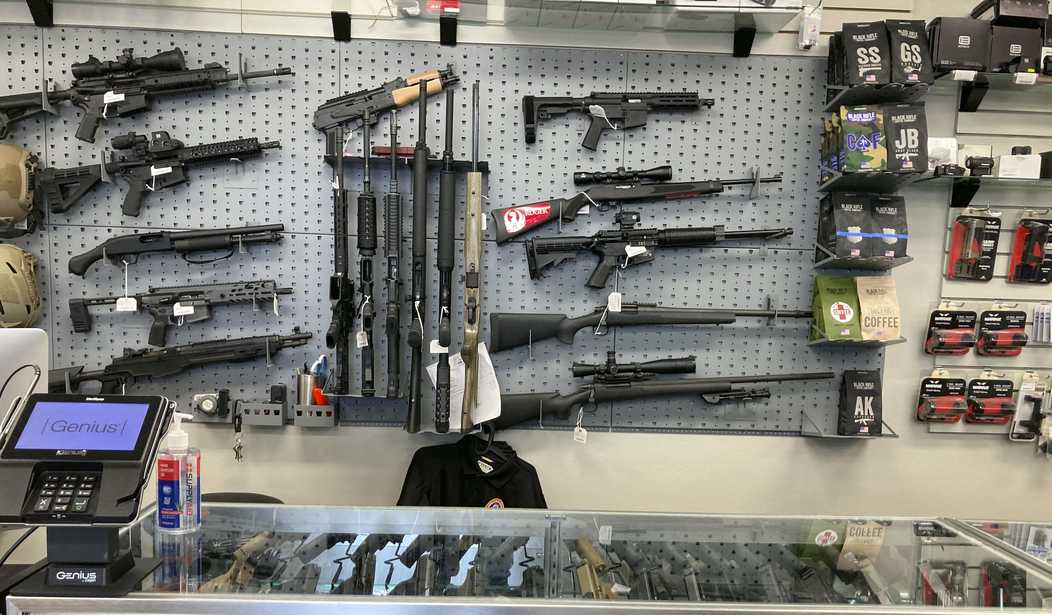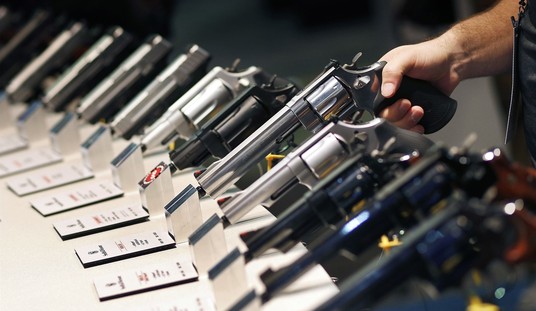Americans purchased more than one million firearms last month, though the numbers were down by about 17% compared to May of 2020. The National Shooting Sports Foundation estimates that 1,324,419 guns were sold at retail from May 1st to May 31st this year, which is still the second-highest total for the month of May in the 20+ year history of the NICS system.
Meanwhile, the private company Small Arms Analytics, which also examines background check data on a monthly basis, has come up with an estimate for May gun sales that jibes with the NSSF’s own statistics.
Small Arms Analytics & Forecasting (SAAF) estimates May 2021 U.S. firearms unit sales at a little over 1.4 million units, a year-over-year decrease of about 300,000 firearms, a 16.8% drop relative to May 2020.
SAAF Chief Economist Jurgen Brauer comments that “the May 2021 number of about 1.4 million firearms is the second monthly decline recorded in the first five months of 2021. Nonetheless, the overall firearms sales pace thus far this year clocks in at nearly 9.2 million units as compared to 8.7 million units for January to May 2020.”
For the year-to-date, the NSSF estimates about 8.5-million background checks have been conducted on firearm transfers this year, but that’s actually higher than this point in 2020, when about 8.1-million gun sales had taken place. SAAF too says gun sales this year are about 500,000 more than what they were in early June of last year, but it’s worth noting that gun sales soared in June of 2020 as civil unrest and violence erupted in cities across the country in the wake of the death of George Floyd in Minneapolis.
So far we’ve been spared another round of burning, looting, and shooting this summer, which may ease pressures on the firearms industry in the months ahead. On the other hand, the NSSF’s Mark Oliva says that there’s still a lot of unease and concern about the Biden administration’s anti-gun agenda, and Americans are “voting with their wallets when it comes to firearm ownership and their Second Amendment rights.”
These figures are hardly surprising to the firearm industry which is battling against the Biden administration’s attacks on gun rights of law-abiding citizens.
Anyone looking for the root causes of why this continues can easily see the reasons. These include the nomination of David Chipman, a paid gun control lobbyist and gun control zealot, who admitted before the Senate Judiciary Committee that he wants to ban the most popular selling rifle in America, along with the administration’s proposed rule to redefine unfinished firearm parts as completed firearms and the pending proposal to reclassify pistol fitted with a brace as items strictly controlled by the National Firearms Act.
These actions show the contempt this administration holds for gun owners. The reaction is predictable. Americans are exercising their right to keep and bear arms before this administration oversteps their Constitutional authority to deny that right.
I think Oliva’s correct, and when the DOJ and ATF release their proposed rule on pistols equipped with stabilizing braces, it will likely lead to a surge in sales of the very guns that the Biden administration is hoping to restrict by declaring them NFA items.
The release of that proposed rule could come as early as this Friday, which would kick off a public comment period where gun owners and interested parties could weigh in on the ATF’s recommendations. Any move on the part of the administration to declare that millions of legally-purchased firearms are actually restricted items that must be registered with the federal government will be met with litigation, but there’ll also be a consumer reaction as well. Just as calls to ban AR-15s and other so-called assault weapons have led to increased sales, AR-style pistols are going to become a lot more popular once the Biden administration tries to formally place them off-limits to consumers unless they register them with the government and pay hundreds of dollars in taxes to do so.
Still, the April and May NICS numbers do indicate that the Great Gun Run of 2020/2021 may be losing some of its velocity, though it’s still going to be some time before the industry returns to “normal.” In fact, I don’t think we even know what that new normal is going to look like, given the influx of more than 8-million new gun owners last year and likely several million more first-time gun buyers since January of this year. The most likely scenario is that even as firearms return to store shelves, ammunition is going to remain scarce.
Stephen Gutowski of The Reload recently reported that some ammunition manufacturers are facing years of playing catch up with orders that have come in over the past 15 months or so, and that means that the ammo shortage isn’t going away any time soon.
“On certain products, we are certainly seeing backlogs that stretch out two years and beyond,” Brett Flaugher, president of Winchester Ammunition, told The Reload. “For those who shoot 9mm and 5.56 ammunition, which are both in high demand, it’s very uncertain how long it will be before people will consistently have ammunition readily available.”
“I’m looking at two and a half years’ worth of demand already on order,” Jason Hornady, vice president of Hornady Manufacturing Company, told The Reload. “So, I’m not seeing a slowdown for two and a half years.”
I hate to end on a down note, but unfortunately that’s the reality that the industry is facing. What’s interesting to me is that even with the multi-year backlog of orders, we’re still not hearing anything from ammunition manufacturers about expanding operations or building new facilities. Obviously that takes not only capital investment but a substantial amount of time as well, and it may be that manufacturers don’t think it would be cost effective or practical to add to their production lines, even with the ammo shortage now impacting gun ranges as well as gun stores and gun owners themselves.









